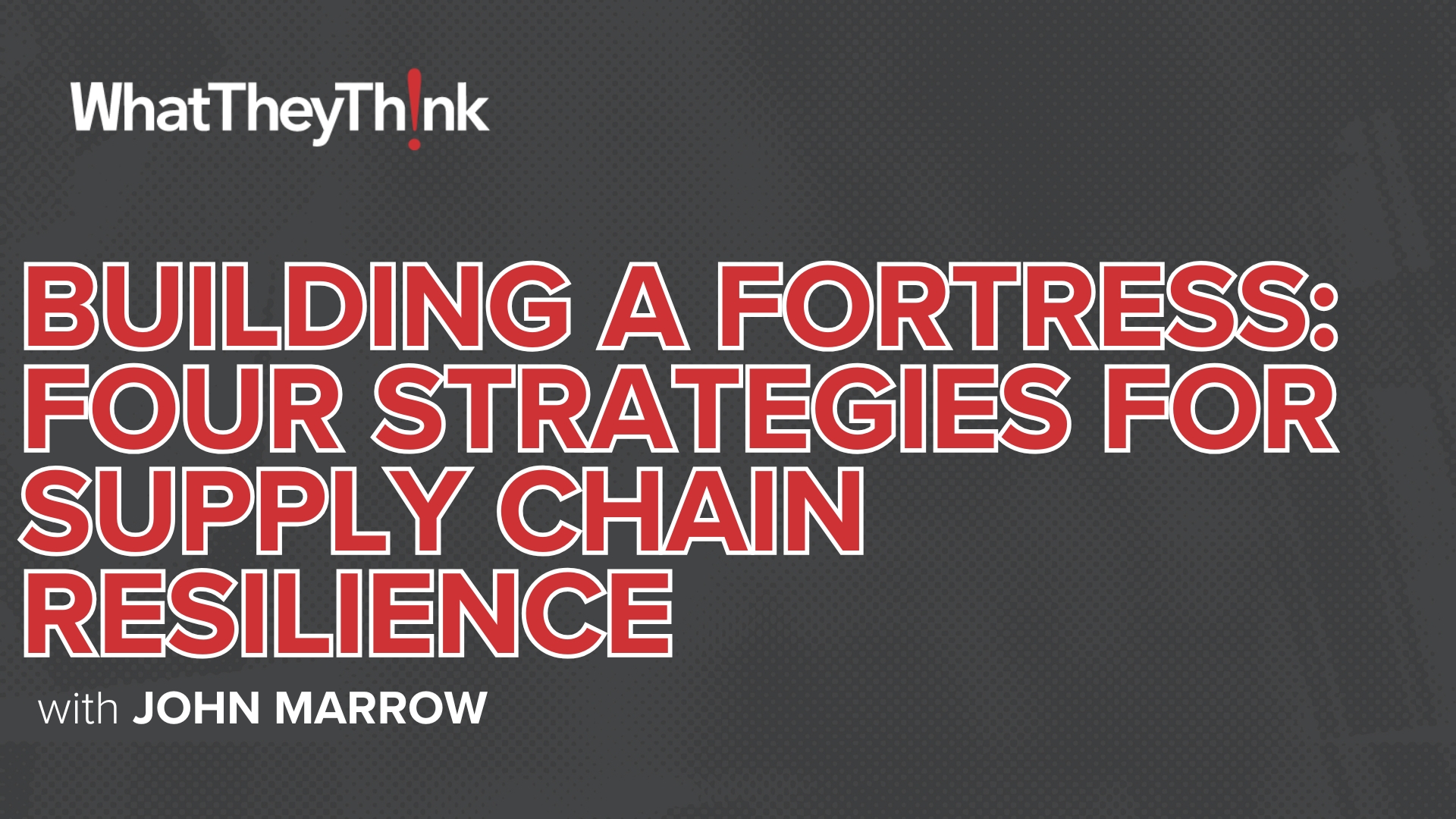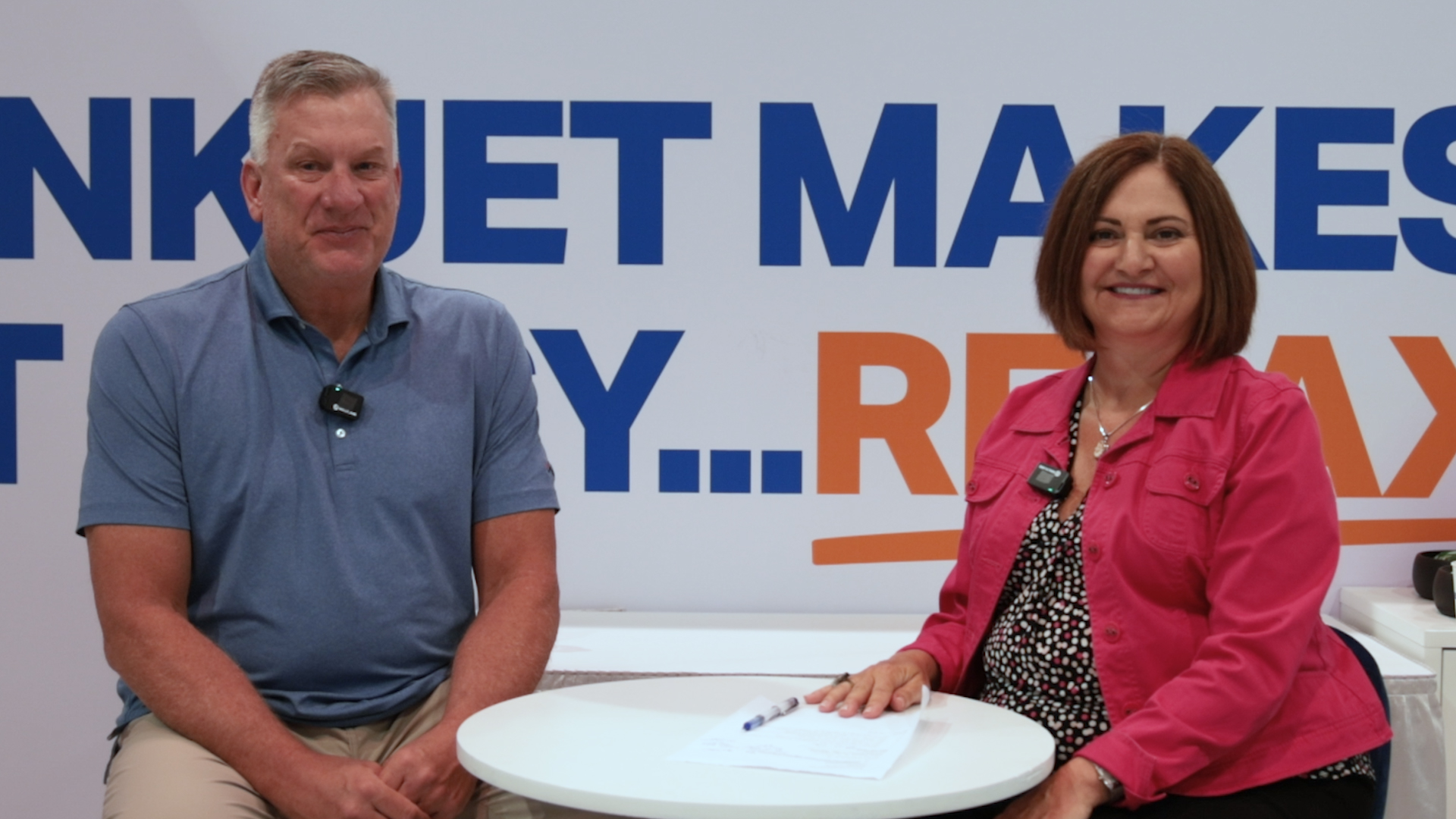Commentary & Analysis
Displaying 3801-3900 of thousands of articles
Insight You Need. Analysis You Trust.
Get the trusted insights you need to understand our evolving industry and emerging trends. Become a Premium Member.
Kodak: An Update on Strategy and Performance
Senior Editor Cary Sherburne tuned into Kodak’s Second Quarter Earnings Call to get an update on Kodak’s strategy. There were some surprises in the call, and more detail about strategic initiatives moving forward.
That Can-Do Spirit: New Trends in Beer Consumption Open Up a Can of Opportunities—Part 2 of 2
Canned beer isn’t your daddy’s tinny-tasting brew. As microbreweries move small-batch production from bottles to cans, it opens up opportunities for short-run can decoration.
Is the Future of the Traditional Textbook Business at Risk?
Time and again, we have seen non-traditional competitors storm a market to the detriment of the establishment. Senior Editor Cary Sherburne came across a fascinating story that could be a bellwether indication of trouble ahead for the textbook industry.
Best Practices of High-Performance Print Sales Organizations: Part 1
According to InfoTrends’ research, high-performance print sales organizations follow clearly-defined sales strategies, hold their sales staff accountable, and continually adapt their organizations to keep pace with ever-changing market conditions. This article is the first in a two-part series highlighting the 10 common best practices reported by survey respondents that experienced double-digit sales growth in the past 12 months.
How Well Does Your Staff Know Your Software?
We train on presses, we engage with the press vendors. We make sure operators are competent – why don’t we do the same for software solutions (especially Print MIS, production workflow, and web-to-print)?
Transformation and Rebirth – July 2017 M&A Activity
July 2017 – Mergers, Acquisitions & Restructuring in the Printing, Packaging & Related Industries. LSC Communications rebuilds diversified publication services; Quark transforms; DG3 acquires UK printer Leycol; Multi-Color goes all-in with deal for Constantia Labels; and more…
Packing a Punch with Print: Catalogs and Direct Mail
Catalogs and direct mail can help overcome the ‘digital fatigue’ that many consumers are experiencing today. Our customers are frequently telling us that when done right -- personalized and relevant to each recipient – it is the printed piece, especially when married with other media, that helps marketers boost response rates.
Does OEE Apply to Digital Presses? This study says Yes
What is OEE and why should you care? How does this metric – Overall Equipment Effectiveness – play in the world of digital printing? Those are questions addressed in a new report from jzarwanpartners. We’ve got a summary of findings for you!
GDP Revisions Offer New Perspective; Printing Shipments Remain Troubling
Revisions to GDP last month showed a slower economy in 2016 and a better one in 2014 and 2015. That’s fine – but we have to make decisions today, not three years ago. Do changes to economic data really matter? They do, but perhaps not the way you think. The stock market is up and setting records, so the economy must be great! A different metric says otherwise. Economic data: it’s a strange place. And commercial printing shipments? Pass the ibuprofen, please.
Conversations on Print - Ep 3: Owning The Creative Relationship - Featuring Peter Gunning
Jennifer Matt talks with Peter Gunning, CEO of Grafenia about how owning the creative relationship has moved from print to the website - our industry needs to evolve with that change. Grafenia's Nettl brand provides print service providers the tools they need to compete in the digital world.
Opportunities and Challenges in Life Stage Targeting
Life stage targeting takes advantage of a powerful truth in consumer marketing—for the most part, consumers are creatures of habit, and the times they are most likely to make major purchases is during times of transition. Understanding and tapping into those transitional times is where life stage marketing comes in.
Pricing Strategy: Labor Theory of Value versus Value-based Pricing
Companies within in the printing industry have historically had a manufacturing mentality—they subscribe to the labor theory of value, which states that the value of a service is determined by the amount of labor that goes into production. Now, thousands of firms in a variety of industries are pricing their services according to the external value created—as perceived and determined by the client—rather than the internal costs incurred in generating services. This article explores the concept of value-based pricing and highlights some real-world examples of companies that are embracing this strategy.
Print Business Investments: Presses vs. Software
Successful print companies have always been re-investing in their business to remain competitors. Up until now, that investment centered around production equipment and systems. Technology in the form of software will be a primary differentiator moving forward.
MIS Systems: Where are we now and where are we going?
Management Information Systems (MIS) and Enterprise Resource Planning (ERP) solutions in the printing industry have the reputation of being inconsistent and extremely diverse. We led a recent study for PRIMIR to explore the typical features of MIS/ERP solutions purchased and to what extent they have been implemented and integrated into print shop workflows. The result provides insight for both commercial printers and MIS/ERP vendors into which capabilities are most important, what their shortcomings are and improvements that can be made.
That Can-Do Spirit: New Trends in Beer Consumption Open Up a Can of Opportunities—Part 1 of 2
Canned beer isn’t your daddy’s tinny-tasting brew. As microbreweries move small-batch production from bottles to cans, it opens up opportunities for short-run can decoration.
Locating Who to Talk To… It’s an Art and a Science!
Having a list of addresses simply isn’t enough in this modern age. Modern marketers are obligated to create an easy path to purchase, especially in an age where brick-and-mortar stores must compete with easy online purchases. This article explores how Geoservices tools can guide people to products by defining clear targeted areas for marketing campaigns.
Software with Print on the Side
Software is the toolset that enables you to solve the business challenges required to win the print that results from them. Your sales process is going to look like software as the main dish with print as a side dish.
Digital Embellishment Still a Hot Topic: JetFX to bring offline sheetfed solution to Print 2017
Digital embellishment was a hot topic at drupa 2016, and more companies are entering the fray. We came across JetFX at an event earlier this year and were intrigued by their approach. Read more about JetFX approach to foiling, spot varnishing, embossing, and high end digital holograms.
Opportunities and Challenges in Lifestyle Targeting
When personalizing marketing communications, it’s easy to default to demographic targeting, which tends to be straightforward and easy to understand. But lifestyle targeting crosses demographic lines and offers new levels of opportunity that can be explored.
Print is a Baby, Not a Geezer: The Newness Crisis
What’s new? You should say “print,” because so many of the media decision-makers have not had noteworthy experiences with the medium. Selling what you know can actually be dangerous, because you need to know what your client and prospect know, first. Only then can you have a chance at relevance. Print is actually a baby, and reference to its glorious past diminishes the many new offerings and tactics that can involve printed materials and specialties in meeting the challenges and objectives of communicators.
50 Billion Customer Communications Can’t Be Wrong!
Print service providers that are currently supporting the customer communications outsourcing market are taking a number of approaches when it comes to navigating from a print-focused core competency to true omni-channel offerings. This article cites recent InfoTrends research to explore how providers are reacting to declining volumes and evolving customer needs.
The Intellectual Property Buried in Your Print Business
Every person in your business solves challenges every day with the tools they have at their disposal and the tools they are comfortable deploying. There is a rich set of intellectual property buried there which can be retrieved by listening and understanding how humans looks for ways to build trusted systems.
Demographics Less Traveled
When it comes to targeting customers, most marketers think about demographic data, such as age, income, gender, and lifestyle. A recent white paper from AccuData lists some less common demographics that may be easily overlooked but that can add a richer dimension to your marketing.
Digital Print for Packaging: The pace is steady and picking up with lots of room for growth
In this article, Sean Smyth – Print Consultant with Smithers Pira examines the results of a new report that looks at the growth of Digital Print for Packaging to 2022. This report breaks down the projected growth by packaging application, and shows some surprising results.
Know Your Codes: As Signage Becomes a Hotter Commodity, Printers Can Offer Regulatory Guidance
Helping customers navigate complex and constantly changing postal regulations has historically been a vital value-added service for commercial printers. The various rules and regulations regarding signage today provide an opportunity for sign printers.
Adding Value to Direct Mail through IP Targeting
Savvy service providers are merging online and offline technologies to compound the effectiveness of their campaigns. This article discusses how IP targeting is being used to add value to today’s direct mail campaigns.
Do You Know the Four Types of Mail Behaviors?
According to the USPS, consumers’ “mail behavior” generally falls into one of four categories: sorters, scanners, weak habits, or skimmers. Each category has a different generational makeup, and it may not be what you expect. Knowing what category your customers tend to fall into can help you develop mail that resonates.
Avoid Common and Costly Traps of Print Software Evaluation
Evaluating software is not a math problem, please don’t count the number of features and award the deal to the highest score. Print software must solve your challenges, in the order of importance to your business.
Family-Owned Newspapers Roll It Up – June 2017 M&A Activity
Hearst, Gatehouse, Lee, Ogden, Phillips and Adams stir up the local newspaper business; Sandy Alexander acquires Designers’ Press; tuck-ins abound and more in the June 2017 – Mergers, Acquisitions & Restructuring in the Printing, Packaging & Related Industries.
They Say It’s Great, But That’s Up for Debate
The economy is sluggish on the positive side, and it would be grand if commercial printing would be the same. Recent printing shipments trends are a concern as the industry continues to reshape itself in response to a dynamic communications marketplace that is seems to re-create itself daily. One Midwest printer lands a big contract for signage… but of the kind that a third wave of media change mandates.
Bobst Group and Radex Launch Mouvent for a Focus on Digital Print
The Bobst Group and Radex formed a new company, Mouvent, to spearhead its digital printing strategy and has announced two production inkjet system for labels and textiles.
Did You Know Interest Rates Have Been Falling?
The Fed has been so reticent about raising rates, and in the process, rates for the 10-year US Treasury actually were negative in February. No, that’s not market rates, that’s the 10-year rate less the year-to-year Consumer Price Index. Since that time, the rate calculated in this manner has moved up 80 basis points. The rate peaked in September 2015 and it’s been down since then. The Fed is having problems making the decision to raise rates, and often announced more rates in a future period but increasing rates at a slower pace. They have a target inflation rate of 2% (which means you lose about 25% of your savings over 10 years on a compounded basis). If you believe that the inflation rate is calculated in a manner that makes it seem lower than it actually is, then the Fed’s desire to see inflation at the 2% rate before they start pushing interest rates higher may be be difficult to reach or sustain. That means long term rates will stay artificially low (on purpose) for a longer period of time than most experts expect.
What Makes Mail “Interesting”?
85% of people will open mail if it “looks interesting.” But what makes mail “interesting”? While we tend to talk about the elements of direct mail in isolation, the reality is, it’s not one element or the other—but a combination of elements whose results are multiplicative rather than additive—that make mail interesting. It’s important to get that combination right.
The New Xerox: What It Means for Software Strategy
Senior Editor Cary Sherburne recently spoke with Xerox executive Jacob Aizikowitz about his new role as head of the new Xerox Software Products Group to learn more about how the new Xerox is bringing together its diverse software development efforts.
Target Marketing: It’s Time to Differentiate Your Business!
A number of very large and profitable companies got their start by focusing on specific market segments, and the same is true for some service providers. Aiming your marketing efforts at a target market can offer a number of benefits. This article focuses on those benefits and outlines the steps that print service providers should take to get started with a targeted marketing approach.
Understanding Order Entry from Your Customer’s Perspective
Too many online order entry tools are discounted because the printer fails to see the value from their customer’s perspective. Don’t let your competitors use your customer experience to replace you.
A Look at 3 Great QR Code Applications
Even with AR/VR on the rise, QR Codes are still very much an important and functional tool for marketers. This blog takes a look at three recent and well-crafted uses of QR Codes.
Sappi 2020Vision: One Paper Company’s Aggressive Plan for the Future
What’s the future of the paper business? One company has a bright vision of its future and is making the requisite changes to get there. Senior Editor Cary Sherburne spoke with Mark Odgers, Director, Packaging Grades at Sappi North America, to get more details.
Preference and Data and Prices, Oh My!
Prices tell us a lot about how media is changing and what’s ahead. It’s funny – the categories that are growing the most are the ones where prices are dropping. That’s strange. But media preference surveys can be misleading because they can assure media producers of the love of the marketplace, and divert their strategic attention to competitors impinging on that affection. What does Mary Meeker know? A trade association executive says she’s biased. That’s okay. Dr. Joe has different data.
Former Xeikon CEO Wim Maes Lands at Summa NV.
People seem to move around a lot in our industry, and sometimes it is hard to keep track. In this edition of “Where Are They Now?” we share Wim Maes’ thoughts on his new gig at Summa NV.
Five Steps to Helping Your Clients Optimize the Customer Experience
Customer Experience (CX) is the product of an interaction between an organization and a customer over the duration of their relationship. This interaction is made up of three parts: the customer journey, the brand touchpoints the customer interacts with, and the environments the customer experiences (including digital environment) during the engagement. This article explores why the customer experience should be a top priority for marketers.
Print Software Evaluation – First Define the Problem It Solves
Every software tool sets out to solve a set of problems, all too often the problem is never defined because the sales process focuses on solutions, benefits, and features. Take the time to understand the problem print software solves and most importantly whether you have that problem!
PDF For Packaging: The Missing Link in Digital Packaging Production
In this article, David looks beyond the hardware at prepress, and how new developments will play a significant role in driving the growth of digital packaging production. This is not surprising, since we have been here before in other areas of the industry.
Making Tracks: Signage, QR Codes, and Customer Journey Analytics
QR codes are great for “making print interactive,” but in today’s high-data marketing environment, they also have a more important purpose: making print measurable.
Marketing Mix Trends 2010-2016: Winners and Losers
Highlights from Target Marketing’s annual Market Mix Trends report, including trends in direct mail (both personalized and traditional), FSIs, email, online search, and mobile.
Industry 4.0: Leading the Transformation
Industrial revolutions are momentous events, and many historians agree that there have been three to date. Interconnected digital technology might be triggering the fourth revolution, and this article explores the actions that printers should take to remain at the forefront of Industry 4.0.
Mailers Weigh in on USPS
How is the United States Postal Service perceived by key members of the mailing supply chain? A recent Idealliance study lays it all out, the good, the bad and the ugly. While there is certainly room for improvement, and it is unclear what the USPS response to this study will be, be sure to read to the end for a view of what mail and communications would be like if the USPS wasn’t functioning as well as it is!
EskoWorld: A Unique Experience
Last month, I attended EskoWorld for the first time. This was the 26th EskoWorld, so I am a little slow on the uptake. But the event was well worth attending and had quite a different feel from other user groups I have attended.
Product Spotlight: Kodak PRINERGY Cloud
Your print business runs on software, more and more of that software is being delivered via the cloud where resources can be precisely controlled and scaling (both up and down) is configurable in real-time. Kodak’s flagship workflow product – PRINERGY Workflow is no exception to taking advantage of what cloud computing can do to a printer’s production workflow.
Conversations on Print - Ep 2: Being a Data Driven Company - Featuring Susan Moore
In this podcast we talk to Susan Moore about the various roles Susan has had in the printing industry: supplies sales, printing business owner, MIS platform provider. We talk about becoming a data-driven company and how MIS transitions are hard but they create a great opportunity to restructure your business model and to transition to today's world.
Small Printers are Big Business – May 2017 M&A Activity
Global franchise system owner of Mail Boxes Etc. acquires US-based printing franchise system PostNet, Standard buys Epic, ICV Partners moves upstream with LeadingResponse, and more.
Friend to the Industry Kip Smythe Has Died
Sadly, the industry lost one of its loyal behind-the-scenes advocates, Kip Smythe. His coordination of efforts involving industry research, statistics, standards, trade, and others, was appreciated by everyone who worked alongside him. Dr. Joe has a special remembrance.
Recovery Indicators Move to Half Here, Half There; Shipments and Profits Fall, Concerns Raised
US commercial printing shipments and profits are in a pattern that suggests another re-set of media communications strategy is underway. The national employment data looked great on the outside, but were disturbing on the inside… again. The latest publishing revenues suggest that content’s kingship status is not what everyone thinks it is.
What Google Trends Has to Say About QR Code Searches
QR Codes have been trending. What does a deeper dive into online search data tell us about interest in QR Code adoption and usage? What market categories show the greatest curiosity? Here’s a look at what Google Trends has to say.
Inkjet Helps BMS Make a “Statement”
Printing and mailing customer communications, statements, and bills is a critical business process that can benefit from outsourcing. This article explores how BMS Technologies is capitalizing on the transaction document outsourcing services opportunity by supporting its customers’ ever-changing needs and investing in inkjet technology.
Software is our Primary Business Tool
Buy, implement, build – software is part of your everyday business life now. It is the primary tool of all businesses.
Measuring Efficiency with Overall Equipment Effectiveness
Overall Equipment Effectiveness (OEE) can be used to both measure your production efficiency, as well as use it as a tool for making equipment purchasing decision.
Show Me the Money: Why Strategic Buyer Financial Disclosure Is Normal in Printing Industry M&A and What to Do About It
In the world of strategic M&A among privately-owned print, mail and graphics communications companies, seller due diligence into the buyer is a common practice.
Six Big Mistakes That Aspiring Wide-Format Printers Can Make
Wide-format and specialty and specialty printing are where a lot of the action is today. But expanding into these new areas is not without its pitfalls. Here are some worth avoiding.
Augmented Reality: Will it Revolutionize Packaging?
Augmented Reality has the potential to open a world of possibilities for brand owners who are seeking to drive an immersive consumer interaction with their products. When applied to packaging, the digital information is visible through mobile or tablet devices and is enabled by an app. Customers are becoming more receptive to AR, and this article explores how brand owners are leveraging packaging to integrate the technology into the customer experience.
Understanding the Software Development Process
Making good software is like building a nice home, it takes multiple resources who are coordinated to deliver on your needs. The more a printer understands the software process, the better they will be at managing it for internal projects or influencing the software roadmap of their vendors.
No Time for Automation? Try Lean
You may not be able to make a commitment to implement full workflow automation, but this does not mean you should write off workflow efficiency gains entirely. Why not try going lean instead? This printer did.
Specialty Printing and Events: Made for Each Other
Commercial printing is evolving into specialty printing, and opportunities abound—if you know where and how to look for them.
Inflation-adjusted Shipments per Employee
The Commerce Department’s revisions to industry shipments show a much different picture of a key metric for the industry, sales per employee. The chart was created using 12-month moving totals of inflation-adjusted shipments and the 12 month moving average of total industry employment. The latest reading through March 2017 is $182.65 per employee, a meager +1.5% higher than it was at the end of 1992. It fell from a peak of $195.51 which was just before the burst of the housing bubble, the rise of social media platforms, tablets, and smartphones. The fall in this calculation has some interesting characteristics. Historically, large printing businesses focused on magazines, catalogs, and newspaper inserts, had sales per employee that were significantly higher than the industry averages, anywhere from 30% to 50% higher.
Inkjet: Finding the Path to Profitability
Advances in inkjet technology have print service providers asking “not if, but when” they should invest. This article highlights recent interviews with a number of inkjet users to find out the critical strategies they are following to accelerate their organization’s path to profitability.
New Xeikon President Benoit Chatelard Shares Vision for the Future
In late March, Xeikon announced that Benoit Chatelard, at the time the Vice President, Production Printing, for Ricoh Europe, would be joining the company as President & CEO Digital Solutions, Flint Group, Xeikon’s parent company. Chatelard began his new role May 8th, and speaks with Senior Editor Cary Sherburne about his vision for Xeikon.
The Danger of Rushing to a Solution
We want to be efficient, we want to feel smart. When we hear even the first words of a challenge, we categorize it and start trying to solve it based on our available tool set. This prevents you from a real understanding of the problem.
Last CTP Innovations and High Quality Printing Innovations Case Dismissed
Another Major Victory for the Printing Industry: The largest of the most recent patent troll cases against the printing industry and its OEMs was dismissed.
The Changing Specialty Printing Market: New Opportunities Big and Small
The same technologies that have enabled the proliferation of wide-format graphics are also profoundly changing the traditional specialty printing market. Here’s how print service providers can take advantage of the “nichification” of commercial print.
Where’s the Workflow?
Despite all the talk about the need for automated workflow, printers are still not rushing to invest in these solutions. How long can they hold on to fractured and inefficient workflows without this becoming a serious liability?
Commerce Department Revisions Send 2015 and 2016 Shipments Down More than -4%
We love numbers, especially when they go in a direction we like. Accuracy of the information we use in decision-making should not be a matter of liking numbers, the numbers are what the numbers are. What happens when one set of numbers you relied on are revised on the basis of new and better information and describe a different scenario than before? Dr. Joe helps sort it out… we think.
Xerox Forum: Connecting Your Network!
Under the “Connecting Your Network” theme, the 2017 Xerox Forum focused on business growth opportunities in today’s dynamic graphic communications market. This article highlights announcements and speakers from the event.
Your Customer’s Lack of Change Management Kills Web-to-Print Adoption
People don’t like change, they need to be led through change because the transition between “how you’ve always done it” and the “new more tech-focused way to do it” can be a river of misery.
Omni-Channel Communications: Secrets of Success
Marketers’ love affair with a digital-only strategy has begun to wane, and while they are continuing to invest in digital channels, print is regaining ground as an important part of the overall media mix. This opens the door to a more active role for print service providers in moving upstream and becoming engaged with helping marketers develop and execute an effective omni-channel strategy that aligns with the way consumers want to interact with brands. We spoke with some experts to learn their secrets of success.
FESPA 2017 Showcases European Wide-Format Introductions
Last week, FESPA 2017 drew attendees from across Europe and beyond to see the latest in wide-format and specialty printing technology and applications.
Creating Value with a Technological Infrastructure
Savvy print service providers recognize the need to offer relevant, integrated services to an ever-changing market. Investing in the right technologies will play a key role moving forward. This article discusses some of the technological areas that can fuel growth in today’s complex marketplace.
Births and Deaths of Commercial Printing Establishments, 2010 to 2014
The Commerce Department tracks the number of business establishments by industry, and among he more interesting reports is the calculation of new and closed businesses. The data take a while to be released, and these new data about 2014 were recently made available. There’s a word of caution here. If someone was a corporation and decides to become a partnership or a proprietorship, that counts as one business closed and one business opened. And then there’s “poor man’s mergers” where two business owners decide to close their two businesses and open one new one. Same people, same equipment, no real change except to the tax authorities and government statisticians. The most important number is the net change of births less deaths. In the worst of the recession, the net number was 6% of establishments. For 2014, that had fallen to a little more than 2%.
Leading Technology Change
Change management is considered a soft skill (maybe because it can’t be measured easily in a spreadsheet). Change management can cause a lot of hard problems with technology change when it ignored.
Legacy Printing Companies Fade Into History – April 2017 M&A Activity
Sheridan Group is sold, Intelligencer joins with Pemcor, Kennedy Group and Resilience Capital form Lux and buy National Label, ProAmpac and Resource Label acquire, summary of equipment manufacturing deals, and more.
Economy, Employment, Print, and Management Decisions
The economy is showing signs, but no one can figure out what kind of signs they are. GDP is down, employment is up. Apple confounds the analysts with a financial report worthy of corporate envy, but the analysts were not happy, and seem to blame Apple for the analysts bad guesses! And then there’s printing shipments: let’s change the subject… it seems many printers are doing just that by changing the process. Do policies in your company insulate you from the detection of market changes and opportunities? It’s not always denial, it’s procedure. That’s not a good thing.
QR Codes Growing in Use for Mobile Banking and Payments
Even as people continue to hate on QR Codes, we see them popping up in more and more places, including mobile banking and payments. This article takes a look at three places we regularly see QR Codes in the world of mobile payments and why we should pay attention.
Annual Summit Educates Printers on the Ins and Outs of Inkjet
Attendees at the recent Inkjet Summit reported that inkjet technology is mature, profitable, and offers printers a variety of options in terms of size, format, and speed. The event attracted 48 sponsors and 139 attendees from commercial print, direct mail, book manufacturing, data center, service bureau, and in-plant operations.
NPES, PIA and Idealliance: The Strategy Moving Forward
Last month, NPES announced it was taking on sole ownership of the Print/Graph Expo show franchise in order to give it the flexibility to make necessary major changes to the show. Senior Editor Cary Sherburne spoke with both Printing Industries of America and Idealliance to get their take and to better understand what their involvement would be moving forward.
Strategy vs. Tactics in Print Software Projects
A print software strategy is a definition of where you want to end up – an objective, a goal for how you want all the software components in your business to work together.
Spectrum Printing Weighs in on Idealliance’s G7 Master Facility Qualification Process
Tucson-based Spectrum Printing recently underwent the Idealliance G7 Master Facility Qualification process by leveraging G7 Expert, Jeff Collins, National Color Solutions Manager for Konica Minolta. We checked into learn more about the process and the early results. We’ll touch base again in about a month to find out what longer term benefits the company has achieved.
Wide-Format: Shelter From the Coming “Third Wave”?
We are about to be hit by a “Third Wave” of technology disruption that will negatively impact the demand for print. Or will it? Not all print is created equal these days. Here are some suggestions for how to weather the storm.
Investing in the Value of Print
As reaching consumers across multiple channels becomes more difficult, marketers’ budgets are rising to meet the challenge. This article explores how print service providers can add value to the overall marketing strategy through investment in core print products, analytics, and digital integration.
Printing Industry Lags Other Manufacturers in Defined Management Processes
In what is not a surprise to many, the job shop operational structure of many printing businesses put the industry near the bottom of all manufacturing industries in terms of its management processes.
Does This Print Software Fit into Your Technology Stack?
There is no “one software package” that runs your entire business. Businesses of all sizes have a technology stack (a collection of software). How well your technology stack fits together (like a beautiful puzzle) greatly determines your success in today’s market.
Carl Dantas, former head of Compugraphic, dead at 83
A lifetime is filled with many people. In 1971, I joined Compugraphic Corp. as their first marketing communications manager. Carl Dantas was then the VP of Operations. As the two founders, Bill Garth and Ellis Hansen, became less involved, Carl moved up the ranks to head the company.
Esko Presents Flexo Innovation
On a recent visit to Belgium, I attended a Esko press briefing scheduled in conjunction with the company’s Flexo Innovation Day customer event.
To Deliver Powerful Customer Experiences – Get Personal
In today’s competitive marketplace, brands are all vying for the eyes of consumers. Ask yourself: Does your campaign inspire engagement or action? Is it timed to reach the recipients at a precise moment? Are you targeting consumers across their preferred communication channels?
Print Is the “New Media” at ISA Sign Expo
Neon. LED. Channel letters. Wooden signs. Magnetic letters. Aside from dynamic digital signage, the “new media” in the sign industry is, strange as it may sound, print. The International Sign Association’s Sign Expo 2017 wrapped up last weekend. Here are some highlights from the show floor and beyond.
Importance of Hard Data: How Soft Data Can Mislead Decision-Makers
Every generation has a different perception of what the world is like. That difference may be appearing in surveys of consumer confidence and similar measures that businesspeople and economists have relied on. Hard data can be so cold, and those surveys added context and perspective with a view toward the future that historical data could not. Now it seems that “soft data” is softer than thought and may be misleading decision-makers about the marketplace.
A Greater Emphasis on Marketing Attribution
The ultimate objective of marketing attribution is to help marketers track their marketing and media efforts and determine the impact on their overall business. Priorities are shifting toward cross-channel measurement, and savvy print service providers are getting into the game!
NPES “Bold New Direction” for 2020 and New Ownership for Print/Graph Expo
NPES has unveiled what it characterizes as a “bold new direction” with its 2020 Strategic Plan. The organization has been evaluating its performance and considering where it wants to be as an organization by 2020 – and what value it can and will bring to the printing industry. NPES has assumed full ownership of the PRINT and GRAPH EXPO tradeshows.
Clear Communication with Print Software
Clear communication is essential when implementing print software. When you don’t ask clarifying questions, you assume that if there were more relevant details about the integration they would have shared them with you. Do not assume. Ask clarifying questions. Be that annoying person who keeps asking questions.
Proof That Adding Images Improves Conversion Rates
Intuitively, we know that adding images to direct mail, displays, and wide-format graphics adds grabs attention, but these statistics from real-life campaigns show that adding images does more—it actually improves conversion rates.
Xeikon Café and the Xeikon Panther Strategy
Xeikon Café marked some significant Xeikon announcements, including the company’s entry into the production inkjet business and a leadership transition. The event, held at Xeikon headquarters in Belgium, drew more than 800 unique international visitors and was supported by about 40 partners.
An Eye for Detail: The Many Layers of Digital Artist Bert Monroy
Berkeley-based digital artist Bert Monroy has spent more than three decades creating intricately detailed digital fine art. His most complex image is part of a new software retrospective exhibit at the Computer History Museum.
- Questions to ask about inkjet for corrugated packaging
- Can Chinese OEMs challenge Western manufacturers?
- The #1 Question When Selling Inkjet
- Integrator perspective on Konica Minolta printheads
- Surfing the Waves of Inkjet
- Kyocera Nixka talks inkjet integration trends
- B2B Customer Tours
- Keeping Inkjet Tickled Pink
© 2024 WhatTheyThink. All Rights Reserved.














